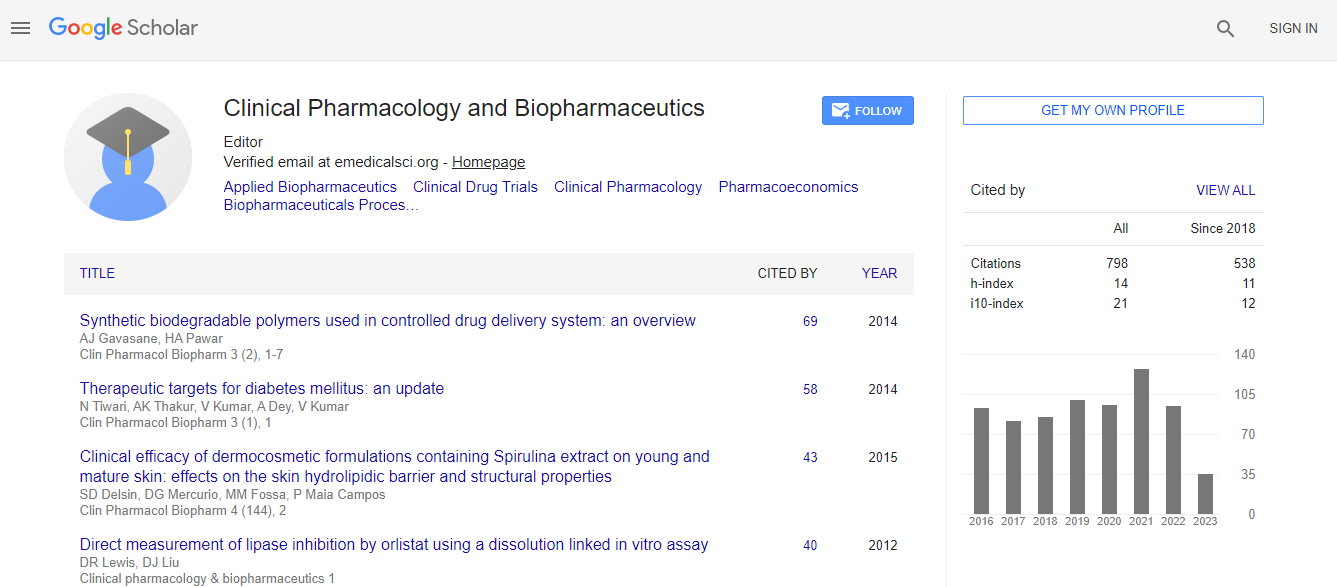Biocompatible Polymers for 3D-Printed Drug Delivery: Materials Innovation for Sustainable Therapies
*Corresponding Author: Satish CS, PESU Institute of Pharmacy, PES University, EC Campus, Bangalore, India, Email: Satishhello@143gmail.comReceived Date: Nov 01, 2024 / Published Date: Nov 29, 2024
Citation: Satish CS (2024) Biocompatible Polymers for 3D-Printed Drug Delivery: Materials Innovation for Sustainable Therapies Clin Pharmacol Biopharm, 13: 518.
Copyright: © 2024 Satish CS. This is an open-access article distributed under the terms of the Creative Commons Attribution License, which permits unrestricted use, distribution, and reproduction in any medium, provided the original author and source are credited.
Abstract
Biocompatible polymers play a crucial role in the field of 3D-printed drug delivery systems, offering promising solutions for personalized medicine and sustainable therapies. These polymers, which are designed to be compatible with biological systems, enable the creation of precise, controlled-release formulations tailored to the needs of individual patients. The incorporation of biocompatible materials in 3D printing technologies enhances the precision, efficiency, and versatility of drug delivery systems. By enabling the fabrication of complex drug-release profiles and multi-drug combinations, these polymers contribute to improving therapeutic outcomes and minimizing side effects. This review explores the latest advancements in biocompatible polymers used in 3D-printed drug delivery, highlighting innovations in materials, fabrication techniques, and the integration of sustainable practices. Additionally, the challenges and future directions in developing these materials for optimized, patient-specific therapies are discussed.

 Spanish
Spanish  Chinese
Chinese  Russian
Russian  German
German  French
French  Japanese
Japanese  Portuguese
Portuguese  Hindi
Hindi 
